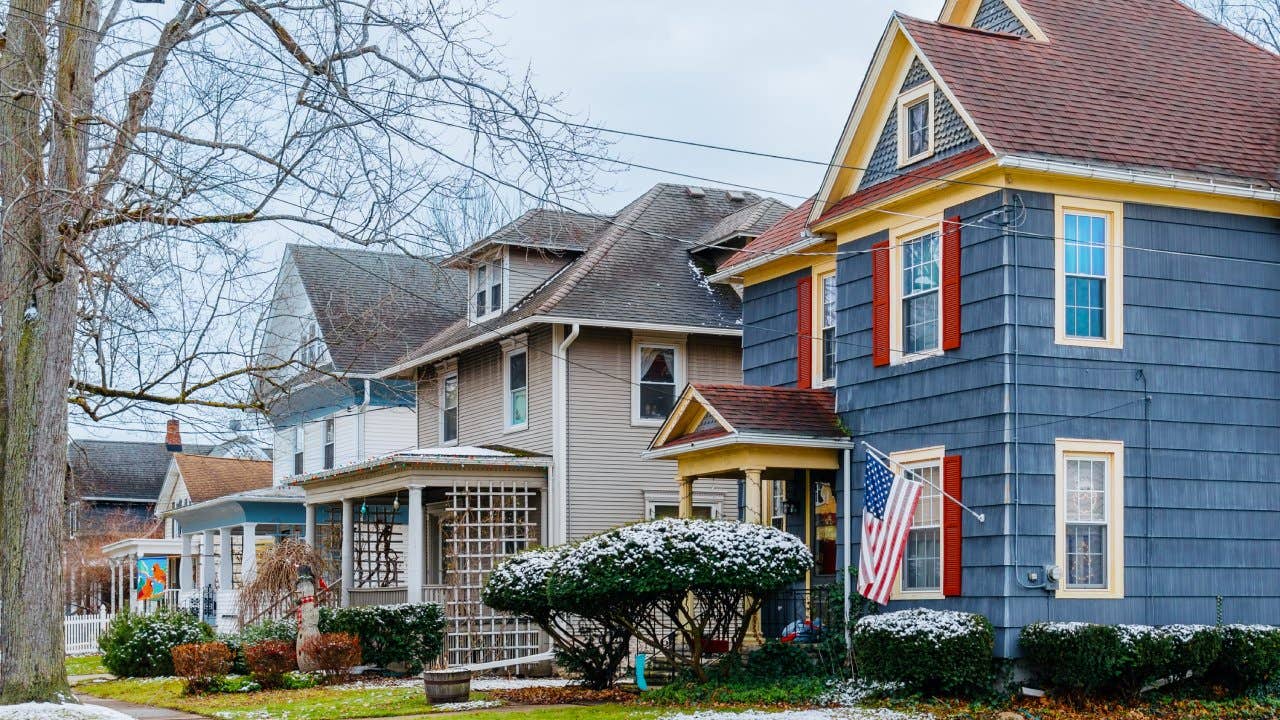The most overvalued housing markets in the U.S.

The Bankrate promise
At Bankrate we strive to help you make smarter financial decisions. While we adhere to strict , this post may contain references to products from our partners. Here's an explanation for .
As home price appreciation settles into a new post-pandemic pattern, once-hot housing markets in California and the West are cooling, while the East Coast continues to heat up.
Valuations zigzag by region. While the super-high-priced Bay Area and New York City markets might come to mind when you think “overvaluation,” a new report from credit rating agency Fitch Ratings reveals a surprising pick for the most overvalued housing market in the nation. Buffalo — a metro area where home values are just a fraction of prices in California — is the nation’s least sustainable housing market as of the fourth quarter of 2022, it says.
“Fitch believes overvaluation is moving to the East Coast from the West Coast, as the most overvalued states and metropolitan statistical areas significantly shifted in the past year,” the agency said in a statement.
Fitch’s 5 most overvalued housing markets
Fitch Ratings’ valuation measures look at such factors as home price trends, local incomes, employment and household formation. According to its calculations, these are the five most overvalued metro areas, among the 100 largest metros in the U.S.:
- Buffalo, NY: Housing in this Rust Belt metro area, which spans from Lake Erie to Lake Ontario, is overvalued by 27.1 percent, Fitch reckons. One unfavorable trend: population decline. New York was the nation’s fastest-shrinking state last year and has lost more than 520,000 residents since April 2020, per the Census Bureau. But Buffalo’s home values are strong — they rose 15 percent from the third quarter of 2021 to the third quarter of 2022, according to the Federal Housing Finance Agency (FHFA).
- Fayetteville, AR: Homes here are overvalued by 27 percent, Fitch estimates. This metro area experienced 23 percent price appreciation in the past year, FHFA reports. The median sale price is just under $400,000, according to Realtor.com, putting the market on par with national norms.
- Rochester, NY: Fitch estimates that the housing market in this metro area is overvalued by 26 percent. Rochester is only about 75 miles from Buffalo, and the market dynamics are similar — except Rochester’s home prices are lower, and its incomes a bit higher.
- Ogden, UT: This metro area, which experienced a population surge from people fleeing pricier housing markets, has cooled a bit. Home values declined by 0.6 percent from the second quarter to the third quarter, FHFA says. But homes remain overvalued by 25.5 percent, according to Fitch.
- Winston-Salem, NC: Area home values here soared 20 percent in the year ending in the third quarter of 2022, FHFA says. Fitch estimates home values are overpriced by 22.6 percent. Local incomes present a challenge: At $77,400, the typical family income is below the national median of $90,000.
A year ago, Fitch named Boise, Idaho, the nation’s most overvalued metro area, but the housing market there has since calmed. Prices fell 1.8 percent from the second quarter to the third quarter of 2022, FHFA says. Even with the pullback, Fitch reckons Boise prices remain overvalued by 20.5 percent. Like many regions in the Mountain West, the city has experienced an influx of new arrivals from California and Seattle in recent years.
At a state level, Hawaii, South Carolina and North Carolina were the most overvalued housing markets, Fitch said.
Are Buffalo home prices really overheated?
Generally speaking, the Buffalo metro area is an oasis of housing affordability. The median home price in the third quarter of 2022 was just $223,000, according to the National Association of Home Builders/Wells Fargo Housing Opportunity Index. However, as modest as that sum is, home prices in Buffalo have doubled in the past five years.
“We’re finally catching up and becoming a big city,” says Joel HusVar, broker at HusVar Real Estate in Buffalo. “We were just long overdue.”
Rosalind Burgin, president of the Buffalo Niagara Association of Realtors and an agent at Mootry Murphy & Burgin Realty Group in Buffalo, offers a similar assessment. First-time buyers can find starter homes here for as little as $150,000, she says: “There’s still affordable housing in the Buffalo market. I just think our prices were low for so long that they’re starting to catch up.”
HusVar and Burgin both say they’re seeing remote workers and investors buy homes in the metro area. Those trends can push values beyond historical norms.
Even though Buffalo’s home values are well below national levels, the region isn’t immune to another trend that’s squeezing buyers: Property prices are growing much faster than incomes. The median family income in Buffalo is $87,700. That’s an increase of 14 percent over the past three years — but home values have soared 39 percent in the same period.
Related Articles



